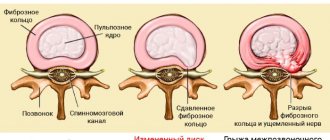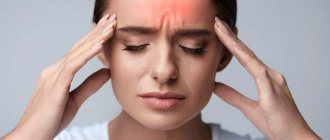The feeling of shaking, vibration, or buzzing in the body is often a sign of increased levels of anxiety. Increased anxiety and excessive worry begin to haunt a person, usually after suffering high psycho-emotional experiences and stress.
Treatment of the consequences of such overvoltage is not very difficult today. We have been successfully restoring the nervous system for over 30 years. This usually takes about 15 days with intensive rehabilitation therapy. However, if a person does not seek help for a long time, complications may develop and then getting rid of the feeling of trembling or vibrations in the body becomes much more difficult.
Today, almost half of the population suffers to one degree or another from the effects of stress overload, which leads to anxiety. The symptoms of these borderline mental states are very diverse. One of these symptoms is often a feeling of trembling or vibrations in the body. Some people feel this trembling as a buzzing in the body or individual parts.
A feeling of shaking and vibration often accompanies
- muscle tension
- difficulty concentrating
- increased heart rate
- extrasystoles
- uncontrollable shaking
- feeling of fear
- fatigue and muscle pain
- headache or migraine
- nausea, vomiting, or loss of appetite
- rapid breathing
- excessive sweating
- feeling of tension, irritability
What to do if there is a feeling of trembling or vibration in the body
The sensations of trembling, vibration, and buzzing that are caused by anxiety are not dangerous. Other accompanying sensations will not cause harm. However, they can significantly reduce a person’s quality of life and create discomfort. Sometimes such symptoms can lead to a loss of control over one's own body. In impressionable people, such sensations can often develop into panic disorder.
Therefore, based on many years of experience, we highly recommend. If you begin to feel trembling, vibrations in the body or its individual parts, at some specific moments. Perhaps these sensations do not let you go throughout the day. Don't start panicking.
It is necessary to contact the specialists of our clinic as soon as possible. We will be able to conduct a special diagnosis of the nervous system, accurately determine the true causes of the sensation of yeast or vibrations and carry out the necessary therapy.
Most common causes of chills
The first thought that appears in a person who notices a headache, chills and weakness is that he has an acute respiratory viral infection or the flu. The patient's body has to produce a large amount of heat, so in most cases the temperature rises in such patients. These symptoms may be accompanied by a runny nose, headache, aching bones and other signs of illness. Under no circumstances should you suffer from discomfort on your legs! Seek medical help and start treatment as soon as possible.
Often the feeling of cold in people with a hypersensitive nervous system is accompanied by severe anxiety. In addition, this may be a consequence of fright. This is a temporary symptom - as soon as a person manages to relax and calm down, he stops freezing. In many cases, chills without fever are a common companion for those people whose working blood pressure is below normal. In addition, in women, the cause of chills can be the first days of the menstrual cycle, as well as the beginning of pregnancy.
Often the cause of chills is all sorts of disturbances in the patient’s peripheral circulation. Especially many of these people live in regions where damp, cold weather is the norm. In such patients, the blood supply to the fingers of the upper and lower extremities is reduced. This can be visually determined by redness and swelling of the skin. Symptoms include severe itching.
People who have been diagnosed with diabetes mellitus are familiar first-hand with the unpleasant sensations that accompany chills. In addition, this symptom may indicate that the patient has other types of endocrine diseases. For example, in patients with insufficient thyroid function, the following symptoms may be associated with chills and headaches:
- hair loss up to baldness;
- a sharp increase in body weight up to obesity;
- mood swings from complete euphoria to hysteria and depression;
- excessively dry skin on the face and body;
- weakness, drowsiness, decreased performance, etc.
The feeling of cold is associated with insufficient production of hormones by the gland, which results in impaired thermoregulation. In addition, similar symptoms are often observed in women aged 50 years and older. This is associated with menopause.
Finally, patients with VSD often suffer from chills and weakness. They can be cold even in July, when everyone is wearing light dresses, shorts, T-shirts and flip-flops. The fact is that people suffering from vegetative-vascular dystonia may have seriously impaired thermoregulation. Such patients need to visit saunas and baths more often, and also start each morning with a contrast shower. During the cold season, swimming in an ice hole can help them strengthen blood vessels and improve thermoregulation. Finally, a massage course conducted by a qualified specialist can play the role of an “ambulance” for such people and temporarily relieve them of chills.
Please note that the above methods of healing the body are not suitable for people suffering from cardiovascular diseases.
How to get rid of the feeling of trembling and vibration in the body
Common situations where the body feels trembling or vibrating can cause a person to fear for their life or physical health. Yes, in some cases such sensations may indicate the presence of a neurological pathology. For example, with Parkinson's disease, trembling is also felt, but it has a physical manifestation in the form of shaking fingers or hands. In anxiety states, physical manifestations can also be observed. Moreover, the stronger the fear and anxiety, the more noticeable the tremor, and the sensations of trembling and vibration will be much stronger than in the normal state.
In order to get rid of the sensation of trembling, vibration or buzzing, you need to undergo restorative neurometabolic therapy of the nervous system to restore the metabolism of the nervous tissue.
How do the sensations of trembling and vibration manifest themselves in the body?
Because these sensations can lead to physical manifestations that manifest as visible trembling, twitching, tics, and even “shaking.” People tend to feel scared, and the anxiety can progress to generalized anxiety disorder. Such mental conditions are much more difficult to treat, like any chronic disease.
At such moments, it is difficult for a person to concentrate, performance and memory decrease, and attention suffers. When your thoughts concentrate on unpleasant sensations in your body, headaches and muscle pain appear. Problems with the gastrointestinal tract may appear, and difficulties in sexual relationships may arise.
If you delay in solving the problem, the disorder will develop and panic attacks may begin and obsessive thoughts may form. People around you may begin to notice that something is happening to you. Against this background, depression can also form. Problems can snowball, as can the variety of symptoms.
How does nervousness and internal trembling manifest?
Each person can feel the manifestations of nervousness differently, so it makes no sense to list the numerous variations of this painful feeling. Increased nervousness is considered a symptom of a disorder of higher nervous activity. Yeast manifestations also have many different variations. More often it manifests itself in the form of internal trembling in the chest, “fluttering”, internal vibration, “buzzing” inside. Less commonly, these symptoms may appear more locally, for example, a person may feel a trembling in the hand or tremors in the leg. At the same time, it is not uncommon to observe muscle twitching in this area of the body.
Related complaints
- Feeling of constant or frequent anxiety.
- A feeling of constant or frequent fear.
- Strong, rapid heartbeat or extrasystoles.
- Feeling tense or on edge.
Psychotherapy for feelings of trembling and vibrations in the body
Most often, people begin to resort to the help of psychologists and psychotherapy. Psychotherapy explains to a person the true origin of these sensations. This understanding often temporarily reduces the urgency of the problem and symptoms decrease. However, even if you realize that all these problems appear only in your mind and they have nothing to do with your physical health, the disease itself will not go away. It will dull temporarily, but with any, even minor stress or physical activity, it will begin to return.
How to properly deal with the feeling of trembling and vibration in the body
In order to reliably overcome the sensations of trembling or vibrations in the body, it is necessary to understand that under the influence of external unfavorable influences on the nervous system, a failure of the metabolic processes of the brain has occurred. In order to restore these processes, special drugs are required.
We use special complex therapy, which includes neurometabolic therapy, which restores biological processes, and special medical psychotherapy, which helps the nervous system restore normal mental reactions.
The set of measures also includes an individual approach to each person, as this is associated with differences not only in the body’s metabolic processes, but also in differences in the pattern of mental reactions. Each person requires the development of an individual therapeutic plan.
What is tremor?
Tremor is an uncontrolled rhythmic contraction of muscles, which most often occurs in the limbs, less often in the head, and the whole body. People over 50-55 years of age are most susceptible to pathology, but the condition can occur at any age, starting from infancy.
A pathological disorder is associated with a weakening of the body or diseases. As an independent pathology, it does not pose a threat to life, but worsens its quality and everyday life. As an alarming symptom, it requires careful diagnosis and appropriate therapy. If not diagnosed and treated in a timely manner, it leads to loss of performance and disability.
First aid for sensations of trembling and vibrations in the body
When the body is stressed, it goes into defense mode, which involves fight and flight. Hormones fill the blood and affect all organs, including the brain, forcing it to work more intensely. Prolonged or very intense stress creates a prerequisite for depletion of brain reserves. The brain prepares the body for action, supports the muscular system in the stimulus for quick reactions. At some point, a breakdown occurs, the signal to the muscles seems to “freeze,” which leads to sensations of trembling, itching, vibration, and buzzing.
The most effective quick fix for shaking from panic or anxiety is to try to return your body and brain to a calm state. There are several techniques that can help you with this.
- Progressive Relaxation - Focus on alternately tensing and relaxing different muscle groups. This exercise should be performed in conjunction with breathing control. Breathing should be smooth and deep. The goal is to relax the body and relieve the “freeze” of the nervous system.
- Yoga – take a “child’s pose”, concentrate on regulating your breathing. After this, perform the sun salutation exercise several times. Strictly monitor the evenness and depth of breathing.
- Meditation techniques are dangerous to do on your own. The first few lessons should be taught by a doctor. Using lessons from the Internet is dangerous for mental health. Exercises are prepared individually for each person.
Get Help Today
The feeling of trembling or vibration in the body that frightens you, reduces the quality of daily life and interferes with work activities can be completely removed.
Contact the Preobrazhenie Clinic and we will establish a complete and accurate diagnosis that will help solve your problems as quickly as possible.
If these sensations have appeared in you recently, then the duration of therapy will not exceed 15-30 days, depending on the individual parameters of the body.
If you tried to solve this problem with a psychologist, were treated in other clinics, but the treatment was ineffective or ineffective, we can solve this problem. However, this will require a little more time. Take the first step today and feel the joy of life again!
Treatment
Conservative therapy
Treatment of tremor is intended to reduce functional limitations and social maladaptation of patients. The basis of therapy is conservative methods, which are usually symptomatic. If secondary tremor is detected, treatment involves eliminating the causes of its occurrence and correcting the underlying pathology. Among the therapeutic measures used:
- Lifestyle optimization.
It is necessary to avoid situations that increase the intensity of trembling. In the early stages of the disease, patients are recommended to master adaptive methods - use pens and cutlery with thick handles, blunt scissors and knives, phones with voice control, etc. - Physical methods.
Methods of physical influence include the use of special orthoses that limit the mobility of the hand in the wrist joint. Assistance in mastering simple motor patterns is provided by physical therapy and occupational therapy, which are complemented by massage, reflexology and balneotherapy. - Pharmacotherapy.
Several groups of drugs are indicated for the treatment of tremor. Based on clinical feasibility, anticonvulsants (primidone, topiramate, gabapentin), antiparkinsonian drugs (levodopa, amantadine, pramipexole), beta-blockers (propranolol, atenolol, nadolol) are prescribed. For severe tremors of the head and voice, botulinum toxin A injections are performed.
Types of alcoholic tremors and methods of relief
The breakdown products of alcoholic beverages contribute to the production and accumulation in the bloodstream of a specific protein - cryoglobulin, which disrupts the interaction of neurons and gamma efferents responsible for transmitting impulses from muscles to the brain and back. At body temperatures below 37 degrees, cryobulins coagulate, forming a sediment in the blood. Against the background of vascular contamination, the nervous system refuses to fully control the body, which is why slight tremors and retardation of movements begin. To get rid of it, it is necessary to detoxify the body, restore the functions of the gastrointestinal tract and proper rest.
Tremor of the limbs is divided into several types:
- Large trembling of the upper extremities. If only alcoholic hand tremors are noted, which does not allow you to bring a spoon to your mouth, therefore, the body experiences an acute lack of dopamine, a neurotransmitter that ensures the transmission of signals between neurons. Getting rid of such tremor is not difficult: you need to provide the body with pleasure. This could be eating strawberries, bananas, chocolate and seafood, playing sports, active sex - the main thing is that the body is comfortable and cozy. In addition to the above, you need to drink B vitamins or fight with medication, taking pills. It is important that they are prescribed by a doctor , and the patient is under his supervision, since some drugs may have side effects that negatively affect the body.
- Flapping tremor of the hands, comparable to the movements of a bird taking flight. Relevant for chronic forms of alcoholism, which are accompanied by frequent binges and unlimited consumption of alcohol. This type of tremor can only be treated within the walls of a hospital: the patient needs urgent help and a complete cleansing of the body from harmful decay products and toxins. Most often, this is a sign that the liver is in serious danger, and before its complete failure, chills begin, jaundice appears, and intoxication of the body is noted. If medical assistance is not provided in time, death is possible.
Is it possible to prevent chills?
To avoid the appearance of this symptom, you must first act on its causes - avoid situations in which it occurs, for example, hypothermia or training in conditions of high air temperature14. It is also important to strengthen the immune system and begin treating a cold at its first symptoms. If chilling is not associated with a cold and occurs periodically8,14,16, you need to consult a doctor in a timely manner to prevent a new attack. Indeed, in such cases, chills can be a signal that the body gives in case of various chronic diseases2.
The information in this article is for reference only and does not replace professional advice from a doctor. To make a diagnosis and prescribe treatment, consult a qualified specialist.
Internal body tremor: causes and treatment
Most often, tremors in the body are the body's reaction to stress. Strong emotional experiences, fear, and constant emotional stress lead to the development of trembling throughout the body. After the emotional stimulus is removed, the trembling usually calms down. However, if a person experiences chronic stress along with lack of sleep and poor nutrition (which can often be observed in workaholics), trembling will indicate the development of neurosis and depression.
Tremor inside the body, the causes of which cannot be associated with external stimuli, may indicate the development of the following negative phenomena:
Treatment for internal tremor will depend on its cause, which is determined by a neurologist. If trembling throughout the body occurs as a result of nervous tension, then it will be enough to eliminate the source of stress and have a good rest. Adequate sleep, walks in the fresh air, physical therapy, and swimming help normalize the functioning of the body. Additionally, it is possible to take sedative medications.
If tremor is the result of a disease, then treatment becomes more complicated. In this case, it is possible to use a complex of neurological drugs. And if tumors are detected, surgical treatment is required.
Declension of the noun trembling (which case)
Declension of words by case in singular and plural.
| Case | Question | Unit | Mn. number |
| Nominative | (who what?) | shiver | |
| Genitive | (who, what?) | trembling | |
| Dative | (to whom; to what?) | trembling | |
| Accusative | (who, what?) | shiver | |
| Instrumental | (by whom, what?) | trembling | |
| Prepositional | (About who about what?) | trembling |
Scope of use
Psychology Idiomatic expression Colloquial expression Taboo vocabulary Figurative expression
Translation of trembling
We offer you a translation of the word trembling into English, German and French. Implemented using the Yandex.Dictionary service
- To English
- To German
- To French
- shiver
- chills, trembling, tingling involuntary trembling - involuntary shiver - convulsive shudder
- trembling, quiver, shaking
- nervous trembling
- tremor
- sudden tremor
- tremble
- slight trembling - slight quaver
- heartbeat
- Zittern
- trembling, chills, cold trembling - kalter Schauer - slight trembling - leichtes Beben
- chills
- chills
- frisson
- chills, trembling - frissons
- tremblement
- trembling, tremor - grelottement
- tremblote
- frissonnement
- awe - impatience
- impatience
Hypo-hyperonymic relationships
change movement trembling
What kind of trembling happens (adjectives)?
Selection of adjectives for words based on the Russian language.
nervous light, large, small inner, cold, strong -willed treacherous treacherous, sweet, sweet, nasty, nasty, pleasant, noticeable unrestrained unreserved icy, faintly familiar convulsive feverish, sensual, joyful, convulsive, painful, painful, terrible, terrible, painful, painful, alleged, indefatigable, indefatigable, perceived, perceived, perceived, perceived, perceived, perceived, perplexed, perplexed, perplexed, perplexed, perplexed, perplexed, inherently, insulted, perplexed, insane, indefatigable, inhole, unhealthy. fir of the last tangible panic of the strongest hot furious disgusting inexplicable chilling creepy long defiant desperate incessant warm morning unexpected angry
What can trembling do? What can you do about trembling (verbs)?
Selection of verbs for words based on the Russian language.
run cover shake run stop make your way pierce shake transfer pierce intensify subside ride subside think transfer disappear run go cover pierce shake pass pass intensify pierce lie down become go issue leave ask transform pierce begin respond master pound speak go change originate continue remember force indicate let shake increase watch resume pronounce cease break out translate say arise spread breathe rise subside run walk
Associations to the word trembling
voice hand knee leg knee body finger back view memory heart chest fear limb cold belly muscle spine shower lip stomach skin muscle impatience member head horror hamstring tip air excitement touch look depth palm excitement anticipation shoulder thought area corner paw sensation bone neck attack tension pleasure finger consciousness premonition jaw blow crown throat earth desire moment response anger calf cutting back of head face
Synonyms for trembling
cowardice fear fear cowardice suspiciousness apprehension panic timidity fear trembling cowardice
Hypernyms for trembling
- movement
Scope of use of the word trembling
General vocabulary Physics Medicine Slang Psychology
Alcohol tremors: how to prevent
To avoid a hangover, there are several simple but practical tips:
- a large meal at least an hour before drinking;
- good sleep;
- consumption of essential B vitamins and vitamin C.
But if, nevertheless, alcoholic tremor is present in the morning, then you need to seek qualified medical help to get rid of this unpleasant condition. The doctor should tell you what alcoholic drinks were consumed and in what quantity. Based on this, drug treatment will be prescribed.
Why the body twitches when falling asleep: scientists' answer
When a person sleeps, the influence of two brain systems, the reticular formation (responsible for sleep) and the ventrolateral nucleus of the preoptic area (responsible for wakefulness), reaches a balance. However, at a time when the body is just falling into sleep, these two systems do not yet have time to balance their influence on the person, and because of this, involuntary twitching appears.
It is important to understand that if your leg or other parts of the body twitch during sleep, this is not a disorder or a disease, but a completely normal phenomenon.
Which doctor should I contact?
A neurologist examines and treats patients with all types of tremor. If trembling of any part of the body occurs, before contacting a doctor, it is necessary to identify and remember the triggers for increased hyperkinesis and cessation of the attack. Special attention is paid to provoking factors, causes of trembling in the body, tremor of the head, hands to prescribe effective treatment
Also, it is necessary to consult a doctor with an already diagnosed pathology in case of intensification of attacks, increase in duration, sharp deterioration of the condition, or if you suspect that your hands are shaking due to taking medications.
How to cope
If chills appear for the first time and nothing else bothers you, there is no need to panic. “Here it will be enough to drink warm, not hot tea, maybe with lemon and go to bed. You can also use a heating pad to keep warm. If symptoms progress, you should consult a doctor. If any changes occur suddenly, for example, blood pressure drops or rises sharply, or other disturbing symptoms appear, you should call an ambulance,” says the immunologist.
If spasms occur not for the first time, i.e. Some vascular manifestations have already occurred, for example, with VSD, and the person knows about them, then you can take a drug to relax the blood vessels, notes the immunologist. The situation should improve. “But if the chills do not go away within 24 hours and worsen, and parallel symptoms intensify and other secondary manifestations appear, you should visit a specialist as soon as possible,” says Anna Shulyaeva.










